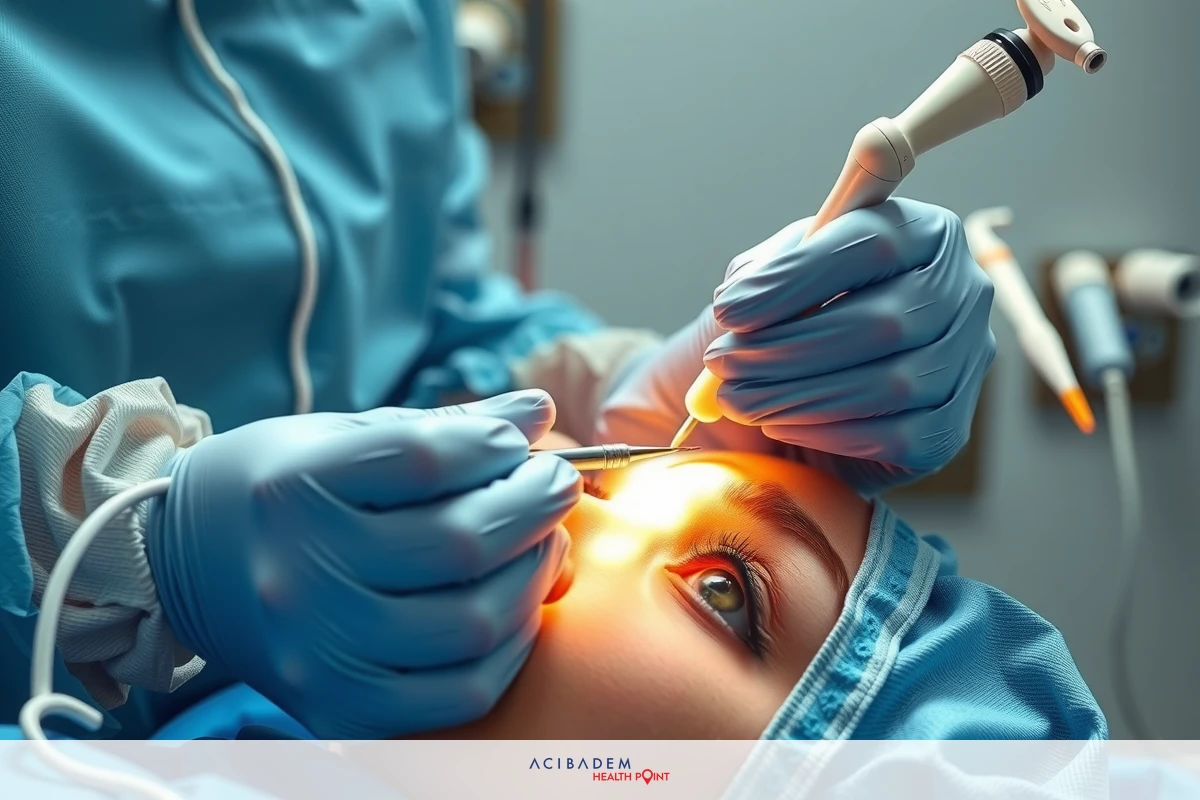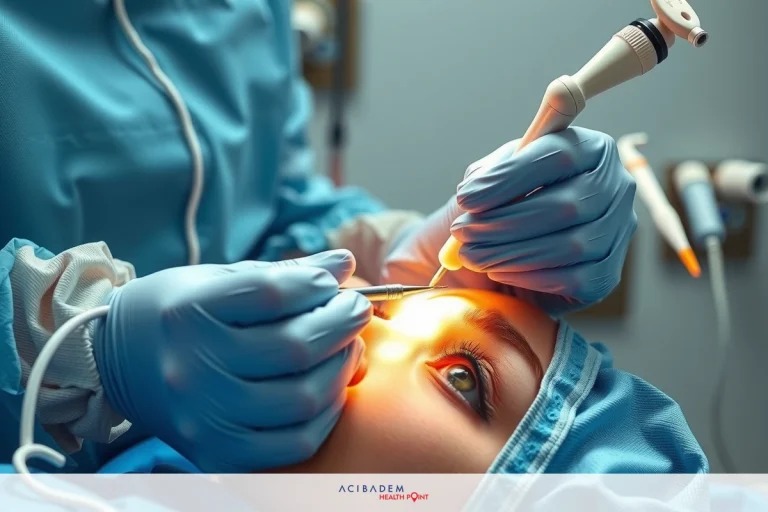Rhinoplasty Surgery Instruments
Rhinoplasty Surgery Instruments Rhinoplasty, often referred to as a “nose job,” is a cosmetic surgery procedure designed to reshape or resize the nose for aesthetic purposes or to correct structural issues that impede normal function. The success of this procedure relies heavily on the skill of the surgeon and the precision of the surgical instruments used. Among these tools are specialized scalpels, scissors, forceps, and a variety of other instruments tailored to the intricate anatomy of the nose.
These medical tools play a crucial role in achieving the desired results from rhinoplasty. Each instrument has a specific purpose and proper utilization that ensures the operation’s success while minimizing risks and potential complications. The following discussion will provide valuable insights into these essential components in rhinoplasty surgery.
Overview of Rhinoplasty Surgery Instruments
Rhinoplasty is a cosmetic surgery that requires precision and expertise. The surgical instruments used in these surgeries are meticulously designed to assist the surgeon in reshaping and resizing the nose while preserving its functionality. There are several types of surgical instruments used in rhinoplasty, each with its specific function and name. These range from basic tools like scalpels and forceps to more specialized instruments like rasps and osteotomes.
Scalpels are one of the most common tools in any surgical kit, including those used for rhinoplasty. They are sharp, thin blades that are used for making precise incisions. Forceps, on the other hand, are employed to hold or manipulate tissues during the procedure. They come in different shapes and sizes to accommodate various needs during surgery. The use of these instruments, among others, allows the surgeon to perform intricate tasks like sculpting the nasal bone or cartilage without causing unnecessary trauma to surrounding tissues.

In addition to scalpels and forceps, there are other specialized tools like rasps and osteotomes that are essential to rhinoplasty surgery. Rasps are used for filing and smoothing bone surfaces, while osteotomes are utilized for cutting or shaping bone. These instruments give surgeons the ability to make subtle changes that can dramatically improve the appearance of the nose. For example, a rasp may be used to reduce a hump on the nasal bridge, while an osteotome might be used to narrow wide nasal bones.
Finally, there is a range of other specialized tools that are commonly used in rhinoplasty. These include spreaders that help keep nostrils open during surgery, retractors for better visibility of the surgical field, and suturing needles for closing incisions. All these medical tools play a critical role in ensuring the success of a rhinoplasty procedure by allowing surgeons to execute their work with high precision and control.
Commonly Used Surgical Instruments
Rhinoplasty surgeries require a unique set of surgical instruments, each designed for a specific purpose during the operation. While some are general medical tools used in various surgical procedures, others are specialized instruments developed specifically for use in rhinoplasty. These instruments have evolved over time, becoming more refined and precise to meet the high standards of cosmetic surgery.
One of the most crucial tools in rhinoplasty is the nasal speculum. This device allows surgeons to view and access the internal structures of the nose during surgery. The speculum is inserted into the nostrils and gently spread to reveal the internal nasal passages. Another essential instrument is the nasal rasp, a tool that resembles a miniature file. Surgeons use rasps to reduce bumps or humps on the nasal bridge, smoothing out the bone for a more streamlined appearance.
In addition to these specialized tools, several standard surgical instruments play an integral role in rhinoplasty procedures. For instance, scalpels and scissors are used to make incisions and excise excess tissue or cartilage. Forceps assist in holding and manipulating tissues during surgery, while needle holders and sutures are necessary for closing incisions post-operation. Furthermore, rhinoplasty often involves reshaping the nasal bones, making osteotomes – chisel-like instruments – indispensable.
Rhinoplasty can also require more advanced instruments like endoscopes, particularly in endonasal or “closed” procedures. An endoscope is a long, thin tube equipped with a light and camera that allows surgeons to visualize the internal structures of the nose on a screen without making extensive external cuts. This enables more precise manipulation of tissues and bones with minimal scarring.
The selection of surgical instruments is not merely about having an array of tools at disposal but understanding their specific uses and applications in different situations. Each instrument contributes significantly to the success of rhinoplasty: enhancing surgical precision, minimizing tissue damage, and ultimately leading to better post-operative outcomes for patients.
Frequently Asked Questions
What is the recovery time after rhinoplasty surgery?
The recovery time after rhinoplasty can vary depending on individual factors and the extent of the procedure. Generally, patients can expect some swelling and bruising around the nose and eye area for the first week or two. Most people return to work or school within 1-2 weeks, but it may take several weeks for all swelling to subside completely. It is important to follow your surgeon's post-operative instructions, including any restrictions on physical activity, to promote proper healing.
Will rhinoplasty surgery leave visible scars?
Will rhinoplasty surgery improve my breathing?
Rhinoplasty surgery can indeed address functional issues that may impede normal breathing. If you have structural abnormalities such as a deviated septum or enlarged turbinates, your surgeon can correct these during the procedure to enhance airflow. However, it is essential to discuss your breathing concerns with your surgeon during the consultation phase so that they can evaluate your specific case and determine if functional adjustments can be made alongside cosmetic changes.
Are there any risks or complications associated with rhinoplasty?
As with any surgical procedure, there are potential risks and complications associated with rhinoplasty. These can include infection, bleeding, adverse reactions to anesthesia, scarring, asymmetry, or unsatisfactory aesthetic results. It is crucial to choose a qualified and experienced surgeon who will take necessary precautions to minimize these risks. Discussing your medical history, following pre- and post-operative instructions diligently, and attending all recommended follow-up appointments can help mitigate potential complications.
As with any surgical procedure, there are potential risks and complications associated with rhinoplasty. These can include infection, bleeding, adverse reactions to anesthesia, scarring, asymmetry, or unsatisfactory aesthetic results. It is crucial to choose a qualified and experienced surgeon who will take necessary precautions to minimize these risks. Discussing your medical history, following pre- and post-operative instructions diligently, and attending all recommended follow-up appointments can help mitigate potential complications.
In most cases, rhinoplasty performed solely for cosmetic purposes is not covered by insurance. However, if the surgery addresses functional issues that impair breathing or result from congenital abnormalities or trauma, insurance coverage may be possible. It is best to consult with your insurance provider to understand their specific criteria for coverage and determine if you meet the necessary requirements.











